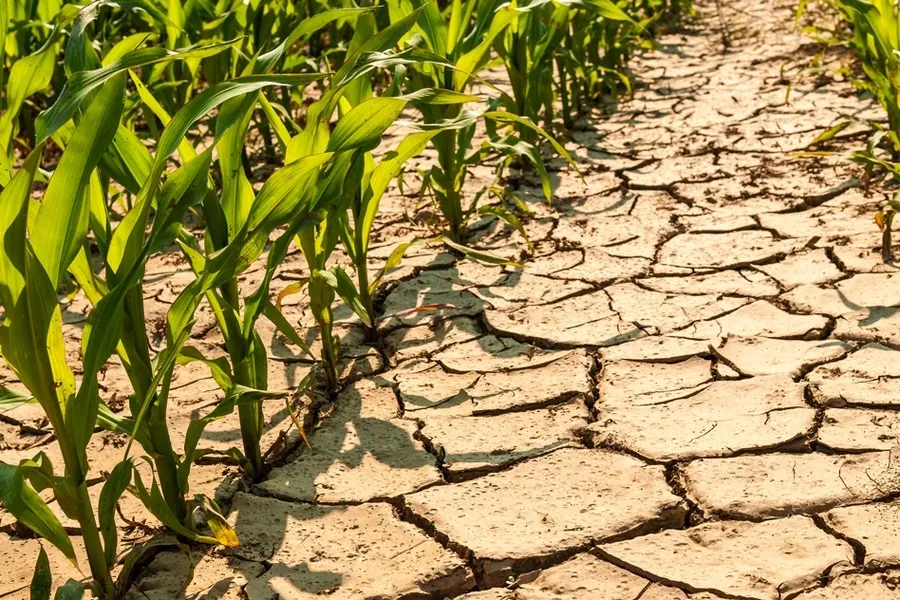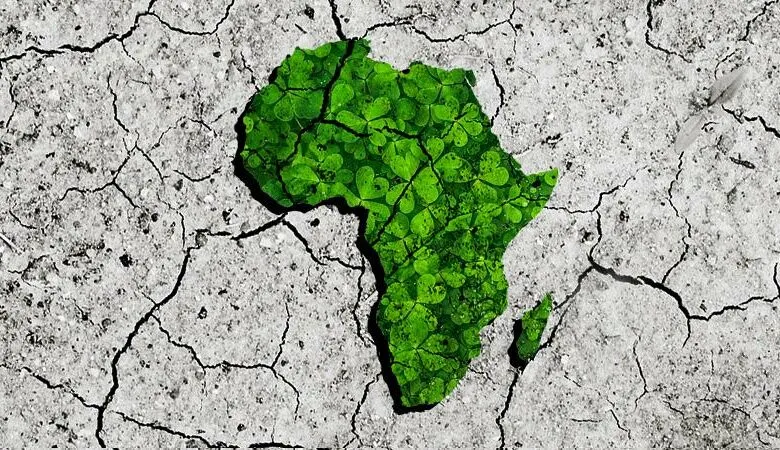How climate affects Africa
The impact of climate on Africa is an extremely important topic, since the continent faces significant environmental challenges that are significantly affected by climate change. The impact of climate on Africa can be summarized in several key points that include environmental, economic, social, and health impacts. Here is a comprehensive article on this topic:
The impact of climate on Africa
Environmental impacts:
A. Drought and desertification:
Many regions in Africa suffer from frequent droughts and desertification, especially in the Sahel and North Africa. Drought leads to a reduction of water resources necessary for agriculture and drinking, which reduces the agricultural capacity of the affected areas. This contributes to land degradation and loss of biodiversity, as the numbers of local flora and fauna decrease. Degraded soils reduce agricultural productivity and make land less able to support vegetation and animals.
P. Flooding:
In contrast, some other regions of Africa such as East Africa and parts of the south of the continent face frequent floods. Such floods cause the destruction of infrastructure and housing, pollute water sources, which negatively affects the life of the population. Floods lead to the loss of property and the displacement of residents, and also contribute to the spread of waterborne diseases, increasing the health burdens on the affected communities.
C. Forest degradation:
The tropical forests of Africa, like the forests of the Congo Basin, are one of the largest in the world. However, these forests face significant threats as a result of deforestation for agriculture, mining and construction. The loss of forests affects the ability to store carbon, exacerbating the effects of climate change. Forest degradation also leads to a loss of biodiversity and a reduction in the natural resources available to local people who depend on forests for their livelihood.
Economic effects:
A. Agriculture:
A large part of the population of Africa depends on agriculture as the main source of livelihood. Climate changes, such as changing rainfall patterns and droughts, affect agricultural productivity leading to food shortages and price increases, and negatively affect food security. Climatic changes lead to crop instability and reduce production volumes, increasing poverty and hunger in rural areas.
P. Livestock production:
Livestock is at great risk due to climate change. Drought and lack of water affect pastures, which leads to a lack of food and water for animals, and, consequently, a decline in meat and dairy production. This reduces the income of farmers and increases economic instability in communities that rely on livestock as their main source of livelihood.
C. Fishing:
The marine fishing industry is affected by climate change, as changes in water temperature lead to fish migration and change their natural habitats, which affects fishing volumes and threatens the food security of coastal communities. The habitats of marine fish and lakes are changing, reducing the amounts of fish available to fishermen and affecting marine biodiversity.
Social influences:
A. Migration and displacement:
Climate change is causing the migration and displacement of the population from the affected areas to safer areas. Drought and desertification lead to the loss of livelihoods, forcing the population to move to cities or other regions, which increases the pressure on resources in the receiving regions. Mass displacement causes increased poverty and social tensions in the receiving regions, affects infrastructure and public services.
P. Conflicts:
The scarcity of resources caused by climate change is increasing tensions and conflicts between different communities over water and agricultural resources, exacerbating local and regional conflicts. Conflicts are exacerbated by competition for scarce resources, which increases political and social instability in the region.
Health effects:
A. Diseases:
Climate changes contribute to the spread of diseases. For example, floods lead to water pollution and the spread of waterborne diseases such as cholera. Rising temperatures also contribute to the spread of insect-borne diseases such as malaria and dengue fever. Climate change increases health risks for communities, especially those that lack access to quality healthcare.
P. Malnutrition:
The lack of food resulting from the deterioration of agriculture leads to high malnutrition rates, especially among children and pregnant women, affecting public health and Human Development. Food shortages increase disease rates and weaken the immune system, exacerbating the health and economic challenges of poor communities.

Adaptation and mitigation strategies to address climate impacts in Africa
Adaptation strategies:
A. Improving water resources management:
Efficient management of Water Resources is a priority in the face of climate change. These strategies include the development of robust water storage infrastructure, such as the construction of dams and reservoirs, and rainwater harvesting technologies. Drip irrigation systems can be used to effectively provide water to crops and reduce losses. Improved water management enhances the ability to cope with periods of drought and ensure the provision of water for agricultural and residential purposes.
P. Diversification of Agriculture:
Diversifying agriculture by adopting the cultivation of drought-resistant crops can help improve food security. Such strategies include the cultivation of new crop varieties that require less water and withstand harsh climatic conditions. Sustainable farming techniques such as organic farming and climate-smart farming can be used, which are based on practices that conserve soil and enhance agricultural productivity in environmentally sustainable ways.
C. Sustainable urban planning:
Planning cities and urban areas in a way that adapts to climate impacts is an essential step. This design includes the construction of Housing and infrastructure that is resistant to floods and natural disasters. Improved sewage systems can be implemented and green areas created within cities to reduce temperatures and enhance air quality. Sustainable urban planning also includes improving public transport networks to reduce carbon emissions.
Mitigation strategies:
A. Promoting renewable energy:
Investing in renewable energy sources such as solar and wind energy can significantly reduce dependence on fossil fuels, thereby reducing carbon emissions. Financial incentives can be offered to companies and consumers for the use of clean energy, as well as improving the infrastructure necessary to support these technologies. Providing renewable energy in rural areas is one of the strategies to save electricity and promote economic development.

P. Reforestation:
Promoting reforestation efforts and restoring degraded forests plays an important role in carbon storage and improving air quality. Local and international afforestation programs can be implemented to increase vegetation cover, which helps reduce carbon dioxide levels in the atmosphere. These efforts include protecting existing forests and preventing deforestation for unsustainable purposes.
C. Reduce carbon emissions:
The development of effective policies to reduce carbon emissions includes improving energy efficiency in various sectors. Circular economy and waste minimization techniques can be applied to improve the efficiency of resource use. Encouraging sustainable transport by developing public transport networks and encouraging the use of electric and hybrid vehicles can reduce emissions from the transport sector.
Adapting to the impacts of climate change in Africa requires significant cooperation between governments, local communities, and international organizations. Strengthening local capacities and implementing sustainable policies can help reduce the negative impacts of climate change and achieve sustainable development on the African continent. Investments in green technology, education, and community outreach are vital to achieving this goal. By following the adaptation and mitigation strategies outlined above, Africa can strengthen its resistance to climate change and achieve a more sustainable and prosperous future for its population.
You can visit the AHAD website to find out more about the projects it offers
ALSO READ
WHAT THE FOOD BASKET CONTAINS IN AHAD
Join us in our message




